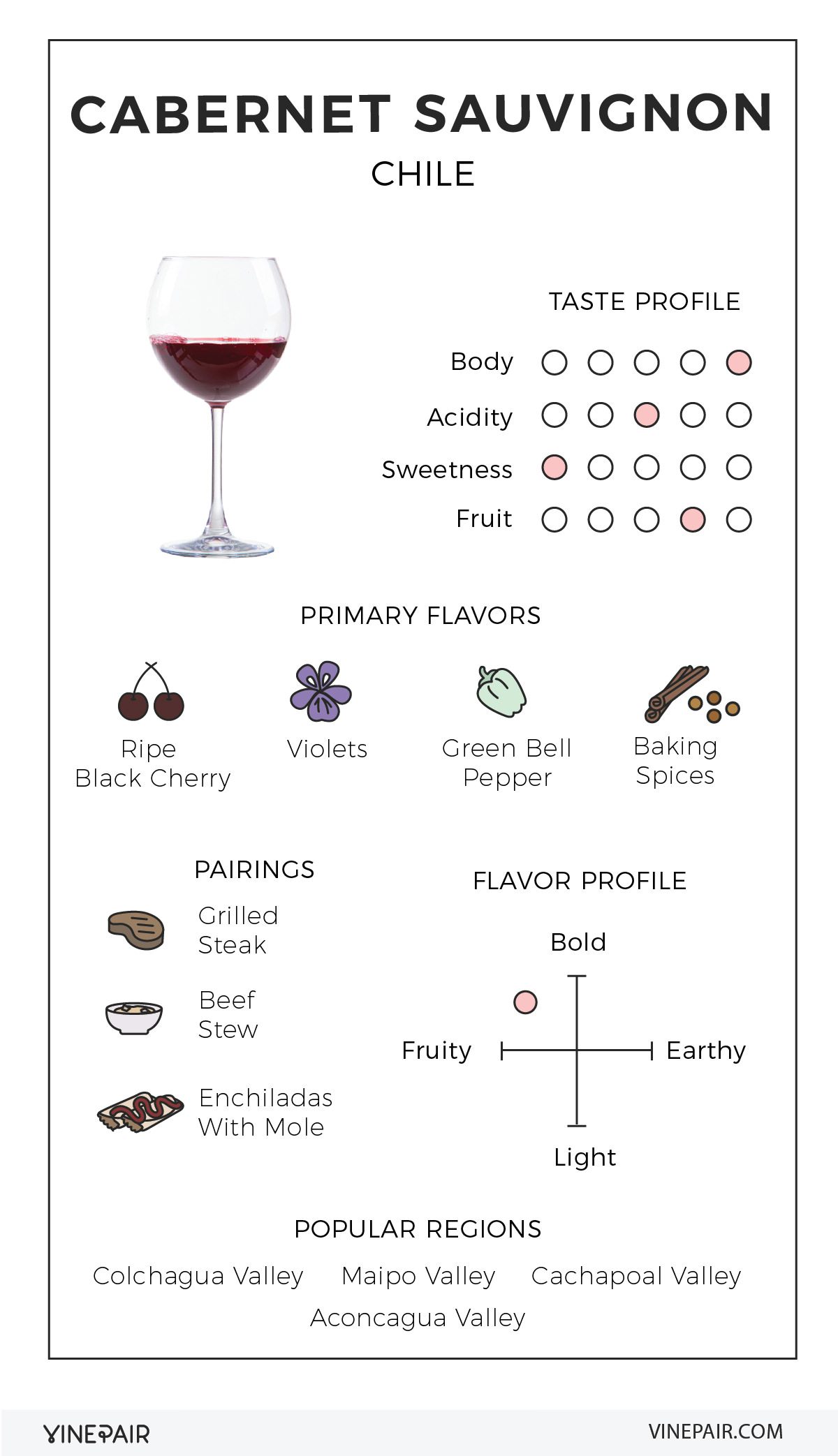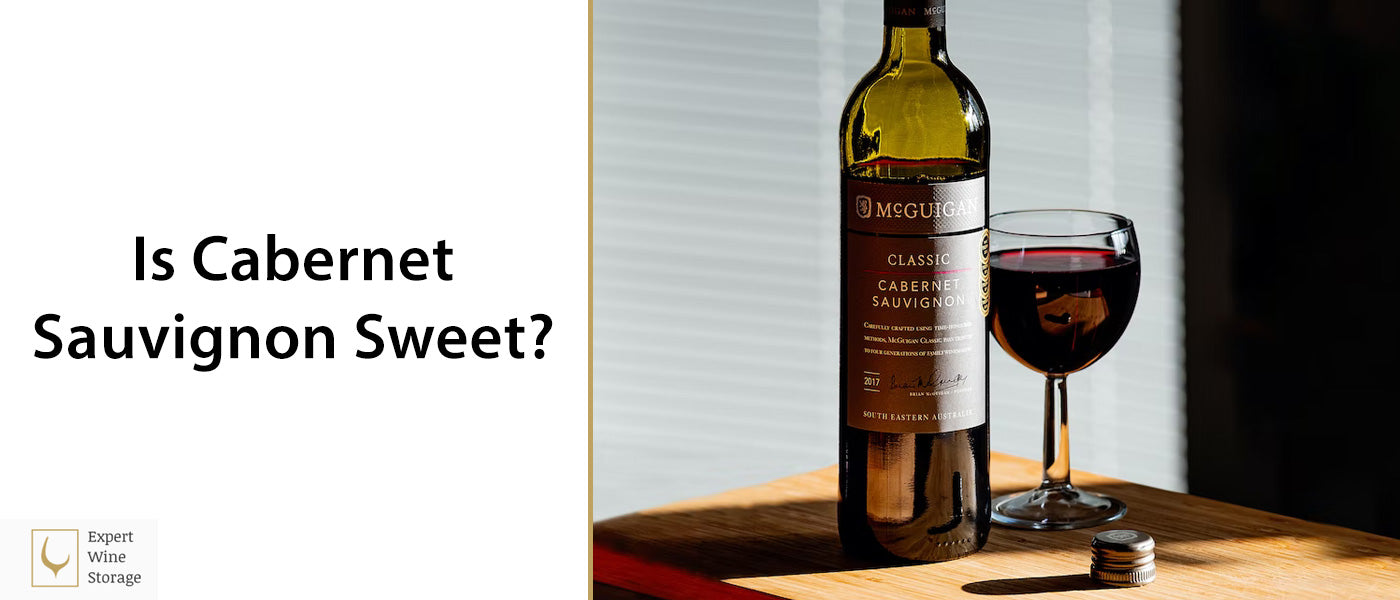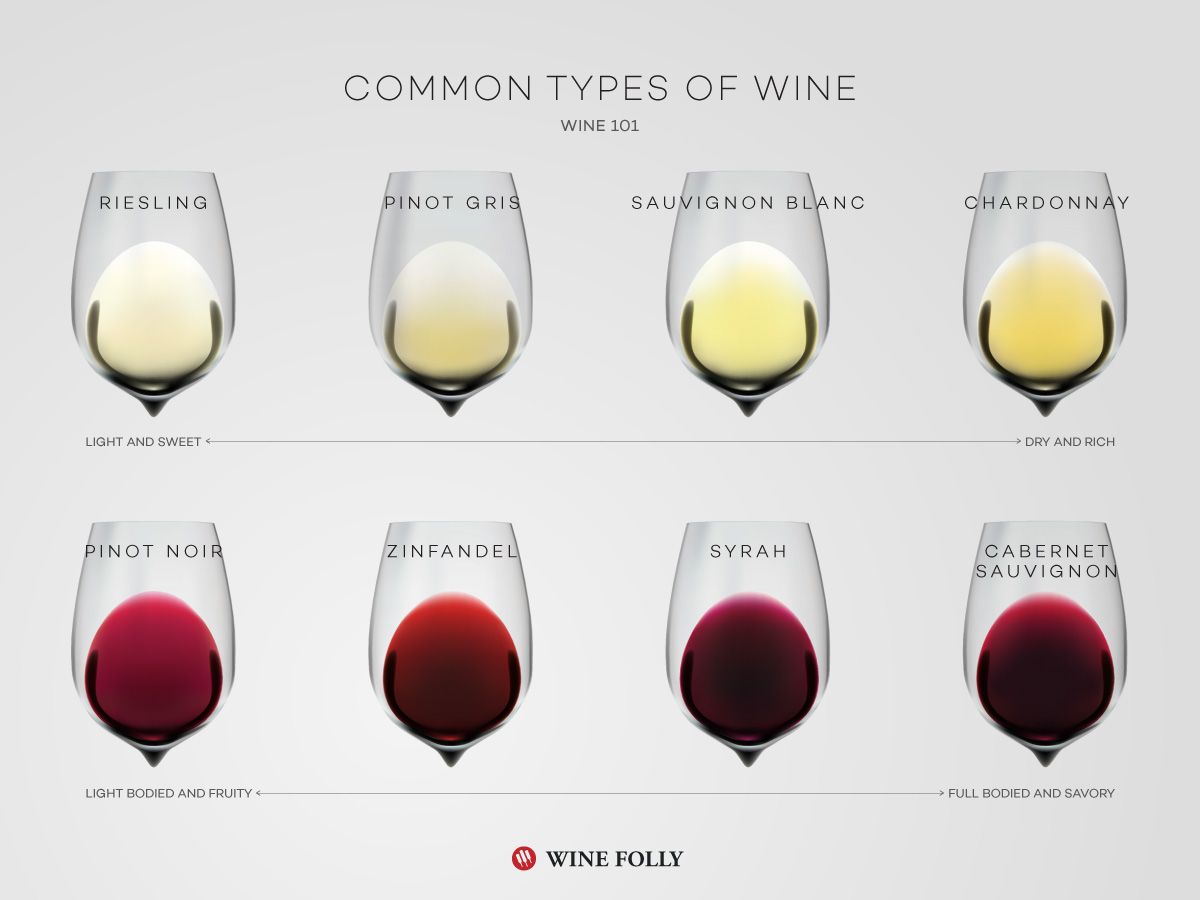What Makes Cabernet Sauvignon Sweet Or Dry: A Flavor Profile Analysis

The sweetness level of Cabernet Sauvignon is determined by the amount of residual sugar left in the wine after fermentation. Cabernet Sauvignon is generally considered a dry wine, meaning it has little to no residual sugar. This allows the rich, bold flavors of the wine to shine through, with notes of blackberry, blackcurrant, and tobacco. The dryness of Cabernet Sauvignon also pairs well with savory dishes, making it a popular choice for food pairings. Overall, the flavor profile analysis of Cabernet Sauvignon reveals its dry nature, making it a favorite among wine enthusiasts.
Understanding The Sweetness Levels In Cabernet Sauvignon Wine
Cabernet Sauvignon wine is generally considered a dry red wine, meaning it has low levels of residual sugar. The fermentation process converts most of the grapes’ natural sugars into alcohol, resulting in a dry taste. This dryness allows the rich flavors of blackberry, blackcurrant, and tobacco to shine through. Cabernet Sauvignon’s low sweetness levels make it a versatile wine that pairs well with savory dishes. Its dry nature also contributes to its popularity among wine enthusiasts. Overall, the sweetness levels of Cabernet Sauvignon are subtle, highlighting its bold and complex flavor profile.
Factors Influencing The Perceived Sweetness In Cabernet Sauvignon
Several factors can influence the perceived sweetness in Cabernet Sauvignon wine. These include:
- Grape maturity: The level of ripeness of the grapes at harvest affects the sugar content and can influence the perception of sweetness in the final wine.
- Oak aging: Cabernet Sauvignon wines often undergo oak aging, which can impart flavors of vanilla, caramel, and spice. These flavors can give the impression of sweetness, even though the wine is technically dry.
- Tannins: Cabernet Sauvignon is known for its high tannin content, which can create a drying sensation in the mouth. This can counterbalance any perceived sweetness and contribute to the wine’s overall structure.
- Serving temperature: The temperature at which the wine is served can affect the perception of sweetness. Cooler temperatures can accentuate acidity and lessen the perception of sweetness, while warmer temperatures can enhance the wine’s fruitiness and make it seem sweeter.
It’s important to note that while Cabernet Sauvignon is generally considered a dry wine, individual preferences and winemaking techniques can result in variations in perceived sweetness.
Key Characteristics Of Cabernet Sauvignon Wine

Cabernet Sauvignon is known for its key characteristics that set it apart from other wines. It is a bold and full-bodied red wine with high tannins and a deep, dark color. The wine often exhibits flavors of black fruits such as blackcurrant, blackberry, and black cherry, along with notes of cedar, tobacco, and sometimes mint. Cabernet Sauvignon has a long finish and a complex flavor profile that evolves with age. Its robust structure and aging potential make it a favorite among wine collectors and enthusiasts.
Tasting Notes Of Cabernet Sauvignon
Cabernet Sauvignon is known for its distinctive flavor profile that sets it apart from other wines. When tasting Cabernet Sauvignon, you can expect to experience bold flavors of black fruits such as blackcurrant, blackberry, and black cherry. These flavors are complemented by notes of cedar, tobacco, and sometimes mint. The wine has a full-bodied and robust structure with high tannins, which give it a firm and gripping texture. Cabernet Sauvignon also has a long finish, leaving a lasting impression on the palate. Its complex and layered flavors make it a favorite for wine enthusiasts seeking a wine with depth and character.
Analyzing The Flavor Components Of Cabernet Sauvignon
Cabernet Sauvignon is a complex wine with a diverse range of flavor components. In addition to the prominent black fruit flavors like blackcurrant, blackberry, and black cherry, there are other secondary and tertiary flavors that contribute to its overall profile. These can include notes of cedar, tobacco, and sometimes mint. The presence of high tannins gives the wine a firm and gripping texture. The combination of these flavors and textures creates a layered and multi-dimensional experience when enjoying a glass of Cabernet Sauvignon.
The Impact Of Terroir On Cabernet Sauvignon Flavor

The terroir, which encompasses factors such as soil composition, climate, and geography, plays a significant role in shaping the flavor profile of Cabernet Sauvignon. Different regions around the world produce Cabernet Sauvignon with unique characteristics influenced by their terroir. For example, wines from Bordeaux in France often exhibit notes of blackcurrant and cedar, while those from Napa Valley in California showcase ripe blackberry and cassis flavors. The terroir not only influences the fruit flavors but also the structure and tannin levels in the wine. It is these distinct terroir-driven qualities that make each Cabernet Sauvignon wine truly special and diverse.
Influence Of Terroir On The Taste Of Cabernet Sauvignon Grapes
The terroir plays a crucial role in shaping the taste of Cabernet Sauvignon grapes. Factors such as soil composition, climate, and geography all contribute to the distinctive flavors and characteristics found in this wine variety. The soil type can influence the grape’s nutrient uptake and water retention, while the climate determines the grapes’ ripening period and sugar levels. Additionally, the vineyard’s location and elevation can impact the grape’s exposure to sunlight, which affects its flavor development. All these elements combine to create the unique terroir-driven taste of Cabernet Sauvignon grapes and subsequently, the wine itself.
How Soil, Climate, And Geography Affect The Flavor Profile Of Cabernet Sauvignon
The flavor profile of Cabernet Sauvignon is greatly influenced by the soil, climate, and geography in which the grapes are grown. The type of soil, such as sandy loam or limestone, can impact the grape’s nutrient uptake and water retention, ultimately affecting the grape’s flavor development. The climate, including temperature and rainfall patterns, determines the grapes’ ripening period and sugar levels, which contributes to the wine’s sweetness or dryness. Additionally, the geographical location and elevation of the vineyard influence the grape’s exposure to sunlight, influencing the development of flavors and aromas. Overall, these environmental factors play a significant role in shaping the unique flavor profile of Cabernet Sauvignon wines.
Comparing Cabernet Sauvignon With Other Wine Varietals

When comparing Cabernet Sauvignon with other wine varietals, it’s important to note its unique flavor profile and characteristics. While Cabernet Sauvignon is typically considered a dry red wine, it stands out for its bold and robust flavors of blackcurrant, black cherry, and sometimes hints of tobacco and cedar. In comparison, wines like Merlot and Pinot Noir tend to be lighter and fruitier, with softer tannins. Cabernet Sauvignon also differs from sweeter red wines such as Zinfandel and Malbec, which have higher residual sugar levels. Overall, Cabernet Sauvignon offers a distinct taste and complexity that sets it apart from other wine varietals.
Contrasting Sweetness Levels Of Cabernet Sauvignon With Other Popular Wine Types
When comparing Cabernet Sauvignon with other popular wine types, it’s important to note the contrasting sweetness levels. Cabernet Sauvignon is typically considered a dry red wine, with minimal residual sugar. In comparison, varietals like Zinfandel and Malbec tend to be sweeter, with higher residual sugar levels. Wines like Merlot and Pinot Noir fall somewhere in between, offering a balance of fruitiness and dryness. Understanding these differences allows wine enthusiasts to select the perfect wine based on their preferred level of sweetness.
Identifying The Unique Flavor Profile Of Cabernet Sauvignon In The Wine World
Cabernet Sauvignon stands out in the wine world with its distinct flavor profile. It is known for its bold and intense characteristics, such as dark fruit flavors like blackcurrant and blackberry, along with notes of tobacco, cedar, and mint. The wine often exhibits a full-bodied nature with firm tannins and a long finish. Cabernet Sauvignon’s flavor profile can also vary depending on the region and winemaking techniques. These unique qualities make Cabernet Sauvignon a favorite among wine enthusiasts who appreciate its complexity and ability to age gracefully.
Pairing Cabernet Sauvignon With Food

When it comes to pairing Cabernet Sauvignon with food, there are some key considerations to keep in mind. This full-bodied wine works best with fattier cuts of meat, such as ribeye steak or lamb chops. The way the meat is cooked will also affect the flavor, so opting for rare to medium-rare red meat is a great choice. Additionally, consider the sauce you’re using as it should complement the intensity of the wine. It’s best to serve Cabernet Sauvignon at just below room temperature (around 55° to 65°F) to enhance its flavors. So, go ahead and experiment with different dishes to find your new favorite pairings!
Best Food Pairing Options For Cabernet Sauvignon
When it comes to pairing food with Cabernet Sauvignon, there are some delicious options to consider. The bold and intense flavors of Cabernet Sauvignon pair well with rich and fatty meats such as ribeye steak or lamb chops. The wine’s full-bodied structure and strong tannins also make it a great choice for pairing with hearty dishes like beef stew or grilled mushrooms. Additionally, Cabernet Sauvignon complements strong cheeses like aged cheddar or gorgonzola. For a sweet treat, try pairing Cabernet Sauvignon with dark chocolate. Overall, the key is to choose dishes that can stand up to the wine’s robust flavor profile.
Enhancing The Tasting Experience By Pairing Cabernet Sauvignon With Complementary Dishes
To enhance the tasting experience of Cabernet Sauvignon, pairing it with complementary dishes can elevate the flavors of both the wine and the food. The bold and robust flavors of Cabernet Sauvignon pair well with rich and fatty meats like ribeye steak or lamb chops, as well as hearty dishes such as beef stew or grilled mushrooms. Additionally, the strong tannins of the wine can complement strong cheeses like aged cheddar or gorgonzola. For a sweet treat, pairing Cabernet Sauvignon with dark chocolate can create a harmonious balance of flavors. By carefully selecting dishes that enhance the wine’s characteristics, you can truly immerse yourself in the full tasting experience.
Conclusion

In conclusion, Cabernet Sauvignon is a dry wine with robust and complex flavors. Its perceived sweetness is influenced by factors such as ripeness, alcohol content, and tannin levels. While not inherently sweet, the wine can have fruity notes that may be mistaken for sweetness. Understanding the flavor profile of Cabernet Sauvignon and how it pairs with food can enhance the tasting experience. Whether enjoyed on its own or paired with complementary dishes, Cabernet Sauvignon offers a rich and satisfying experience for wine enthusiasts.
Summary Of Cabernet Sauvignon Flavor Characteristics
Cabernet Sauvignon is a dry red wine known for its robust and complex flavors. It showcases notes of dark fruits such as blackberry, black currant, and plum. The wine also presents hints of tobacco, cedar, and dark chocolate, adding depth and complexity to its flavor profile. Cabernet Sauvignon is full-bodied with bold tannins, providing a structured and lingering finish. These distinctive characteristics make Cabernet Sauvignon a favorite among wine enthusiasts looking for a rich and intense tasting experience.
Final Thoughts On The Sweetness Levels And Flavor Nuances Of Cabernet Sauvignon
In conclusion, Cabernet Sauvignon is known for its dry and complex flavor profile. While it may not be inherently sweet, it offers a plethora of flavor nuances that make it a favorite among wine enthusiasts. The dark fruit flavors, hints of tobacco and cedar, along with the bold tannins, create a rich and satisfying tasting experience. The terroir also plays a significant role in shaping the flavor characteristics of Cabernet Sauvignon. Overall, whether enjoyed on its own or paired with a delicious meal, Cabernet Sauvignon offers a sophisticated and enjoyable wine experience.
FAQ About Understanding Wine Flavor
Q: Is Cabernet Sauvignon a sweet wine?
A: No, Cabernet Sauvignon is typically a dry red wine known for its full-bodied and complex flavor profile.
Q: What does it mean for a wine to be sweet?
A: A sweet wine has a higher residual sugar content, which gives it a noticeable sweetness on the palate.
Q: How can one identify the sweetness level of a wine?
A: The sweetness level of a wine can be identified by its taste, with sweet wines tasting noticeably sweet on the palate compared to dry wines.
Q: Are there different types of sweetness in wines?
A: Yes, wines can have varying levels of sweetness, from bone-dry (no sweetness) to off-dry, medium-sweet, and very sweet wines.
Q: What factors contribute to the flavor profile of a wine?
A: The grape variety, winemaking process, terroir, aging process, and residual sugar content all play a role in determining the flavor profile of a wine.
Q: How can one develop a better understanding of wine flavors?
A: Tasting a variety of wines, learning about different grape varieties, regions, and winemaking techniques, and keeping notes on personal preferences can help in developing a better understanding of wine flavors.
